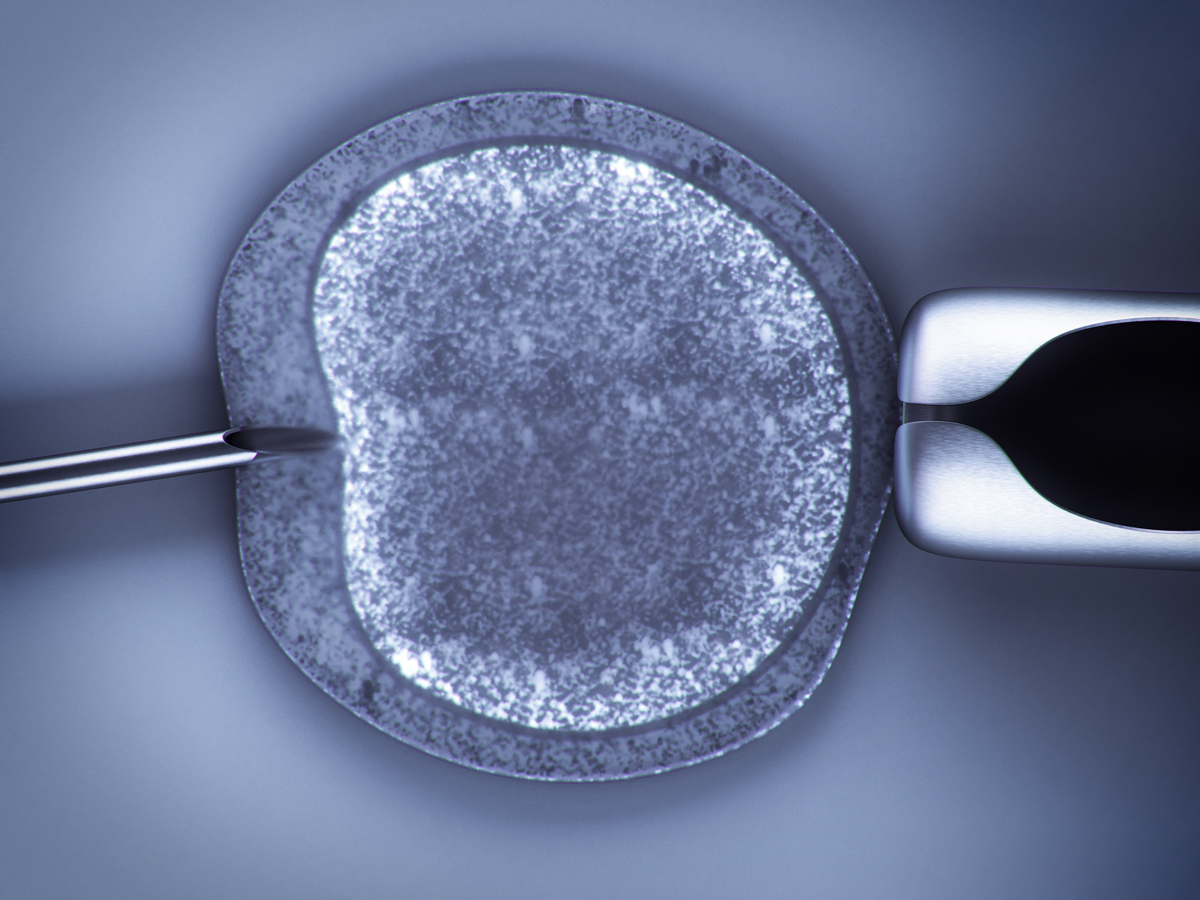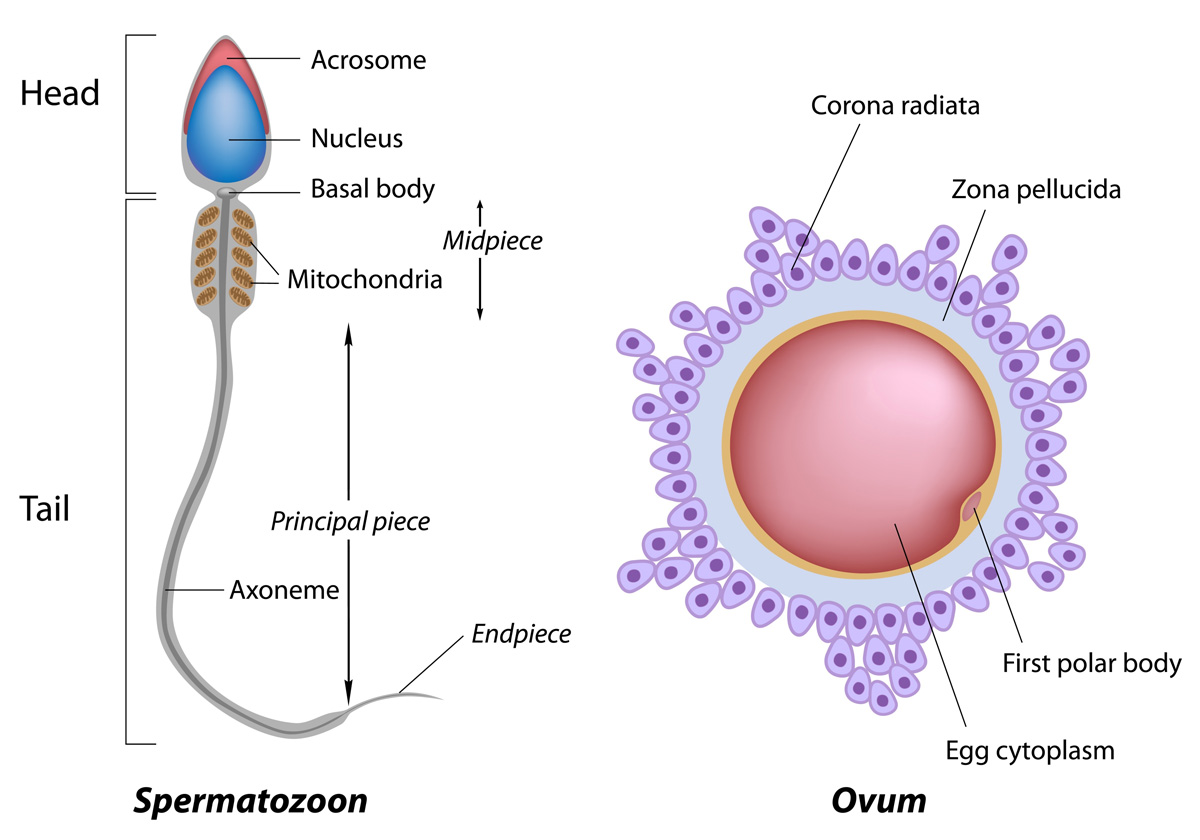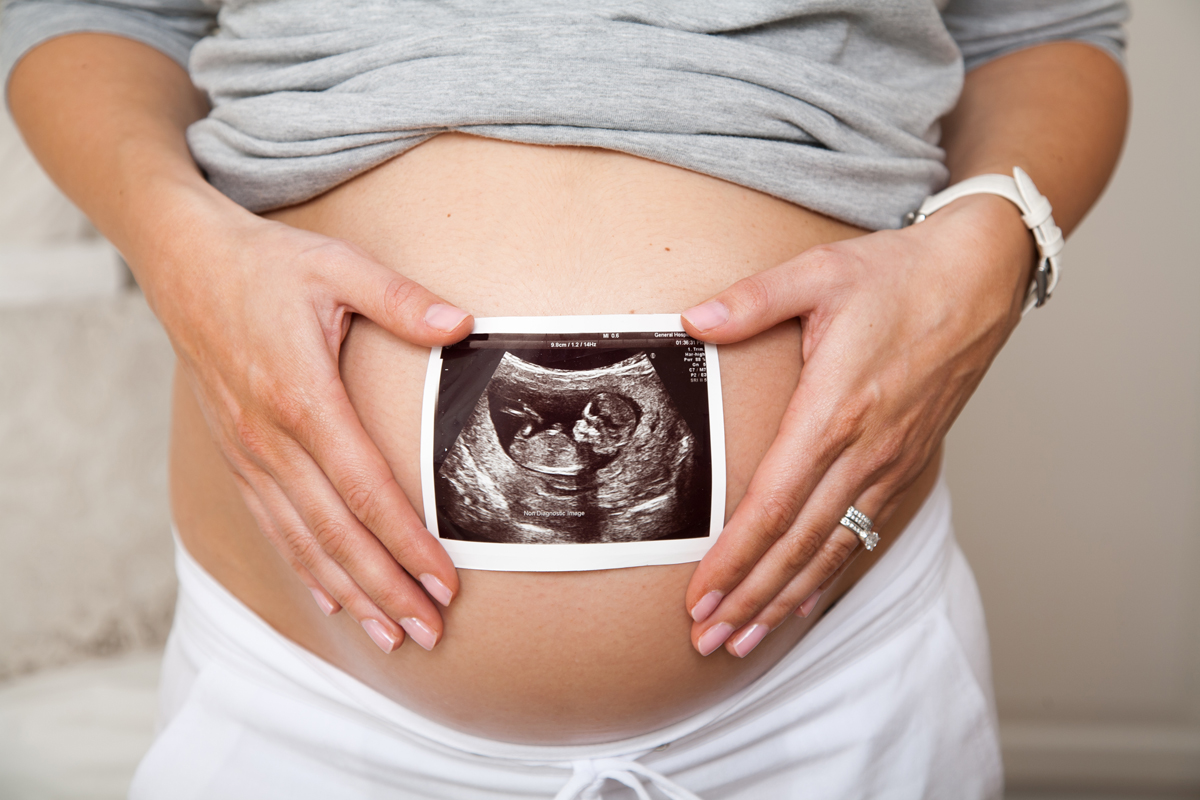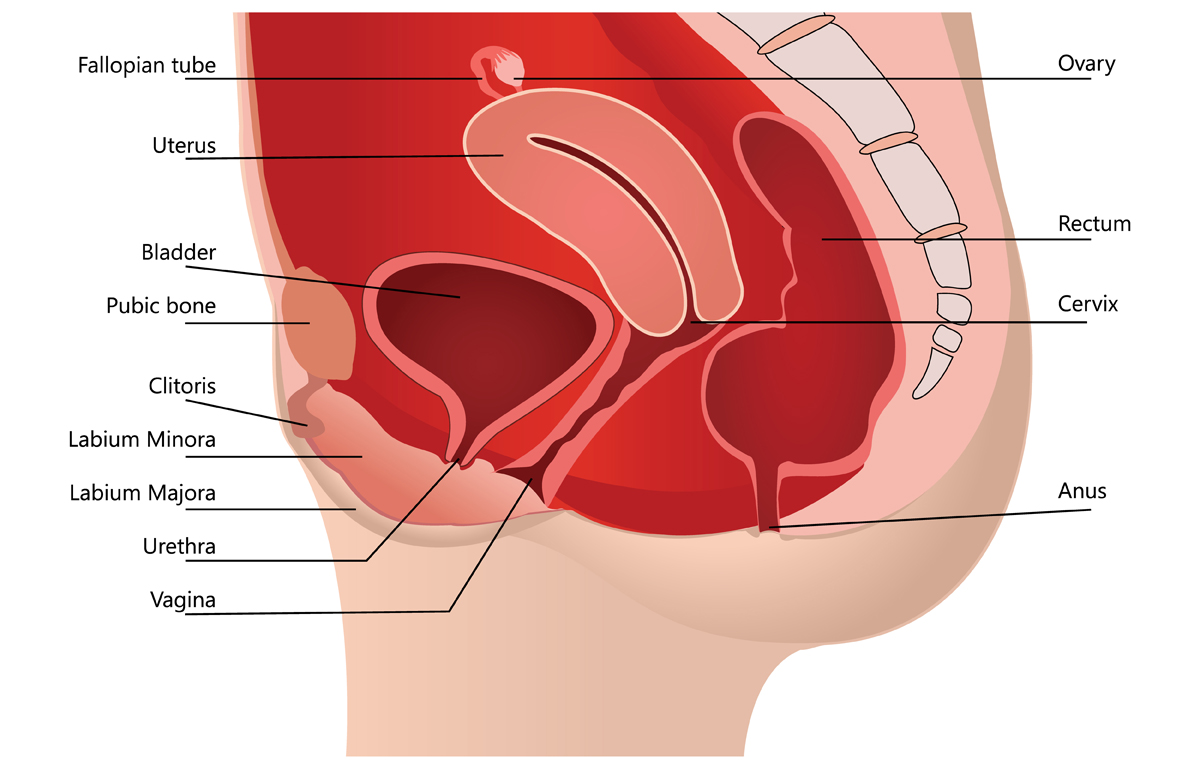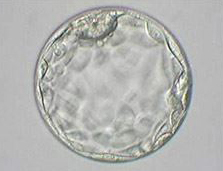
Posts by
Dr. Maximilian Schuff
Alle Autoren
“IMSI versus ICSI”
| Study on the potential impacts of laboratory techniques used on the live birth rates and the health of children conceived by IVF
August 19th, 2019
IVF treatment involves the fertilization of an oocyte by a sperm under the microscope. To this end, different techniques may be used, such as ICSI and IMSI. In order to learn more about the role played by these laboratory techniques in the assessment of sperm quality and subsequently also in a successful therapy outcome, we intend to closely examine the matter, while taking into account the findings of a recent study.
For the sake of a better understanding, we would like to start by briefly outlining the entire cycle of therapy. Controlled ovarian stimulation is the first step in IVF treatment. Follicle stimulating hormones are used to induce the development of multiple egg-containing follicles in a woman’s ovaries. Transvaginal oocyte retrieval is used to remove these oocytes from the ovaries. Subsequently, the quality of the collected oocytes is analyzed (diagnosis of oocyte quality). While the oocytes are being collected, the male partner is asked to produce a semen sample by masturbation. The obtained oocytes will thus be fertilized with the prepared sperm outside of the woman’s body in a laboratory procedure. In this context, there are several techniques, such as IMSI and ICSI which also serve the purpose of evaluating sperm quality (sperm diagnostics). Artikel lesen
Comments Off on “IMSI versus ICSI” | Study on the potential impacts of laboratory techniques used on the live birth rates and the health of children conceived by IVF
“Large or Small?”
| Study on how to optimize ovarian stimulation/follicular aspiration
May 21st, 2019
Fertility treatment usually starts with the stimulation phase. This means that the woman has to undergo customized hormone therapy in order to induce her ovaries to produce multiple follicles, each containing an oocyte. The number and growth of follicles within the ovaries are closely monitored by ultrasound examinations.
During the stimulation cycle, the ovarian follicles do not grow at the same pace, resulting in the presence of follicles of various sizes. This growth determines the optimal timing, for both the induction of final oocyte maturation (“Triggering Ovulation”) and subsequently the collection of the ova. The right timing is finally decisive for the success of the treatment. If the duration of ovarian stimulation is either too short or too long, this may reduce the number of follicles containing so-called competent oocytes. By this we mean the ability of an oocyte to mature, become fertilized and develop into an embryo capable of reaching the blastocyst stage and implant itself into the uterus. Numerous factors can play a role here. Do they also include follicular size? Artikel lesen
Comments Off on “Large or Small?” | Study on how to optimize ovarian stimulation/follicular aspiration
What is actually meant by miscarriage?
| Part 2 of our topic series »Trying to conceive after a miscarriage«
March 18th, 2019
[← article overview of the topic-series »Trying to conceive after a miscarriage«]
If a pregnancy cannot be brought to term but instead ends in spontaneous abortion or miscarriage, this could be a devastating experience, especially for those couples who had long been trying in vain to get pregnant and have decided to finally undergo fertility treatment. In order to be able to cope with this traumatic event and find out what exactly happened, a sound medical explanation or diagnosis could be very helpful. The prerequisite for this, however, is the clear determination of the gestational age at the time of miscarriage and the type of pregnancy loss. Artikel lesen
Comments Off on What is actually meant by miscarriage? | Part 2 of our topic series »Trying to conceive after a miscarriage«
Increased Risk of Hypertension due to IVF?
| A new study has created a great deal of uncertainty among patients
October 22nd, 2018
A recently published study (see link) conducted by a Swiss working group on the increased risk of high blood pressure in children conceived by assisted reproductive technologies (ART) is currently making big waves, not least through nonstop media coverage. Additionally, this was fueled by some statements made by the senior author of this publication. He insists that IVF should be considered as a cardiovascular risk factor, similar to the risk from smoking (NZZ of 7 September 2018).
Thus, the study suggests a direct correlation between IVF treatments and specific health risks. This, of course, leads to much uncertainty among couples who either have already started treatment or who are still considering the use of assisted reproductive technologies. Against this background, it is even more important for us at the IVF Zentren Prof. Zech to provide a scientifically well-founded analysis of this study in order to enable our patients to make informed, fact-based decisions. To this end, we have published a response letter (more to follow) in the specialist magazine Journal of the American College of Cardiology where the study was published. In that respect, we would like to give a few words of explanation. Artikel lesen
Comments Off on Increased Risk of Hypertension due to IVF? | A new study has created a great deal of uncertainty among patients
Sperm quality
Assessment and significance in fertility treatments
January 10th, 2018
Egg and sperm cell are of equal importance for the development of the embryo. A closer look at the sperm factor suggests that the assessment of sperm quality followed by the selection of appropriate spermatozoa for the fertilization of the oocyte are important steps on the path towards the much longed-for child.
During fertilization, signaling cascades are triggered inside the oocyte by the fertilizing sperm. During the fusion of the sperm and oocyte plasma, the release of a factor carried within the sperm head changes the calcium concentration in the oocyte cytoplasm. This again induces a series of subsequent reactions, finally enabling the fertilization of the oocyte.
It will therefore become all the more important to perform a comprehensive analysis of sperm morphology (shape, structure). An existing impairment (e.g. identification of vacuoles = crater-like structures in the sperm head) may have negative impacts. Already at the end of the 1990s, electron microscopic investigations revealed a correlation between the presence of vacuoles and the impairment of natural male fertility (Berkovitz et al., 1999). Artikel lesen
Comments Off on Sperm qualityAssessment and significance in fertility treatments
Implantation rate
Part 4 of the topic-series »Success Rate«
June 2nd, 2017
[← article overview of the topic-series »Success Rate«]
If practitioners of reproductive medicine talk about the implantation rate, they mean the percentage of those embryos that implanted themselves into the uterine lining after having been transferred to the womb. Fetal heartbeat can be visualized via ultrasound in order to definitely confirm the implantation of the embryo.
If we assume, for example, that 100 couples undergo IVF treatment involving the transfer of two embryos, resulting in the successful implantation of 50 embryos, this would mean an implantation rate of 25%.
The implantation rate depends on the age of the woman and is directly related to the number and quality of the embryos transferred. What does this mean with regard to the prospects of becoming pregnant? Are the chances significantly higher following the transfer of two embryos? Artikel lesen
Comments Off on Implantation ratePart 4 of the topic-series »Success Rate«
Why an embryo does not “spill out”?
A biological-physical approach regarding embryo implantation in fertility treatment
May 5th, 2017
Among patients undergoing fertility treatment (IVF/ICSI/IMSI), the following question is repeatedly raised in the relevant forums:
“Could it be possible that my embryo may somehow ‘spill out’ of the uterus after embryo transfer?”
In this respect, it should be noted that the uterine cavity is not a true cavity in the classical sense of the term. The cavity is completely covered by the endometrium (lining of the womb), i.e. there is no empty space (see graphical representation of the uterus).
This means that the opposite sides of the endometrium are in contact with each other. Between them, there is a liquid film covering the mucosa where the embryo sticks to. As an example, imagine some moist leaves sticking to a glass pane, a phenomenon which is only due to the leaf’s “airtight sticking” to the pane. Although the endometrium is not completely level, the viscose liquid film is sufficient to make the embryo adhere to it.
This biological background takes us to two factors that are given by the laws of physics. Artikel lesen
Comments Off on Why an embryo does not “spill out”?A biological-physical approach regarding embryo implantation in fertility treatment
Assessing the chances
Part 2 of the topic-series »Success Rate«
February 2nd, 2017
[← article overview of the topic-series “Success Rate”]
Couples considering IVF treatment are accompanied by high hopes and expectations towards their treating specialists. During the initial consultation, most of them raise the key question regarding their chances of achieving pregnancy through reproductive technologies.
Predicting the outcome of fertility treatment is always a medical challenge, as there are numerous factors which may influence the individual chances of getting pregnant and giving birth.
Comments Off on Assessing the chancesPart 2 of the topic-series »Success Rate«
Unwanted Childlessness and Stress
What do we know about the links existing between them?
October 15th, 2015
Illnesses, environmental pollutants, ageing are, inter alia, factors which may impair fertility. Unwanted childlessness is often due to a combination of several causes. To date, we know far too little, for example, about the role played by psychological strain. Couples wishing to conceive are usually under great pressure and are often exposed to high stress.
A number of questions arise at this point:
If this stress is caused by the unfulfilled desire to have children, then what about couples who have not been diagnosed with fertility disorders?
Is it possible that in both cases stress can reduce the chances to conceive a child? Artikel lesen
Comments Off on Unwanted Childlessness and StressWhat do we know about the links existing between them?
Blastocyst Culture
How treatment methods may help to make the dream of having a child come true
October 6th, 2014
Involuntary childlessness today is no longer an inevitable fate, thanks to a wide range of treatment methods. This variety includes different approaches in terms of their efficiency which, from the perspective of the respective physicians, biologists and experts, undoubtedly also play a role here. However, from a scientific point of view, it is important to take a very critical look at them. This also applies to one of the most essential points with respect to IVF treatment, namely assessing the development potential of growing embryos.
Due to our competence that is based on over three decades of experience in successfully performing assisted reproductive techniques, we are able to identify efficient methods and, more than anything, to safely use these methods. Since 1996, we have established at our IVF Center in Bregenz an IVF technique known as blastocyst culture (extended culture up to the 5th day of embryonic development) as the method of choice in order to improve pregnancy rates (first systematic blastocyst culture worldwide). Artikel lesen
Comments Off on Blastocyst CultureHow treatment methods may help to make the dream of having a child come true
Glossary
Glossary of terms used in reproductive medicine
AMH - Anti-Mullerian Hormone | Artificial Insemination | Assisted Hatching | Azoospermia | Blastocyst | Blastocyst Culture | Carcinoma | Cryopreservation | Egg Donation | Ejaculate | Embryo | Embryo Transfer | Endometrium | Endometriosis | Follicle | Follicular Puncture | Hashimoto's Thyroiditis | Hysteroscopy | ICSI | Implantation | IMSI | Infertility | Insemination | ISME-T | IVF | Karyogram | Miscarriage | OHSS | Oocyte | Ovarian Stimulation | Ovary | Ovarian Insufficiency | PCOS | PGD | PGS | Progesterone | Social Freezing | Sperm Donation | Spermiogram | TESE | Fallopian tubes | Uterus | Vitrification | Zygote |FAQ
TOPIC-SPECIAL

Infertility
• Possible causes in women• Possible causes in men
• Why is age a reason for?
• Psychological help

Aspects in fertility treatment
• Spermiogram• Testicular Sperm Extraction (TESE)
• Hormonal stimulation
• IVF / ICSI / IMSI
• Blastocyst culture
• Cryo cycle
• Genetics (PGD/PGS)
• Egg donation
• Supportive measures
• "Social Freezing" / "Medical Freezing"
TOPIC-SERIES
Fertility treatment procedure
Part 1 | Initial ConsultationPart 2 | Ovarian Stimulation
Part 3 | Ultrasound Scan
Part 4 | Egg retrieval
Part 5 | Embryo Transfer
→ Infographic
Success rate - What to look for
Part 1 | "What does this mean for us?"Part 2 | Assessing the chances
Part 3 | Pregnancy rate
Part 4 | Implantation rate
Part 5 | Cumulative pregnancy rate
Trying to conceive after a miscarriage
Part 1 | Dealing with the LossPart 2 | What is actually meant by miscarriage?
Part 3 | Support through hypnosis





